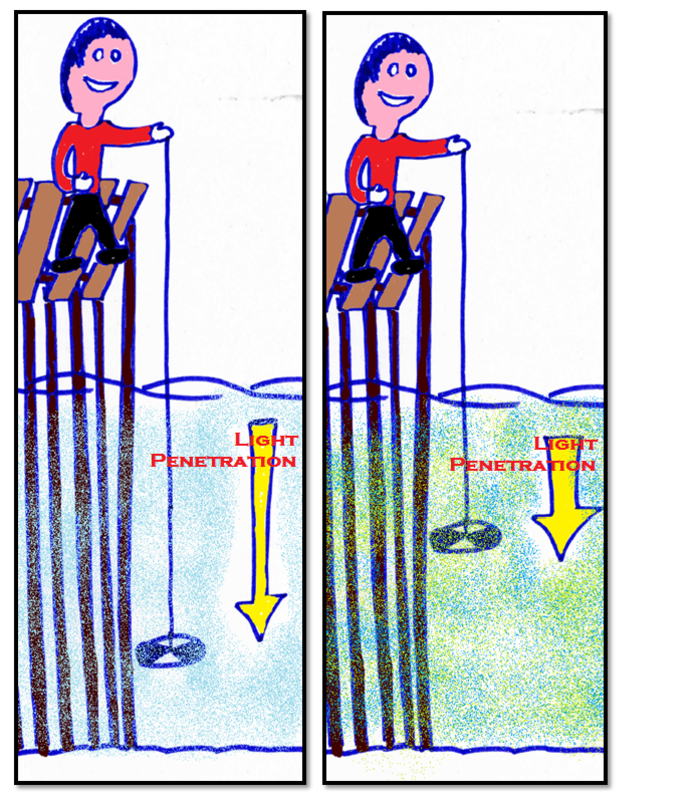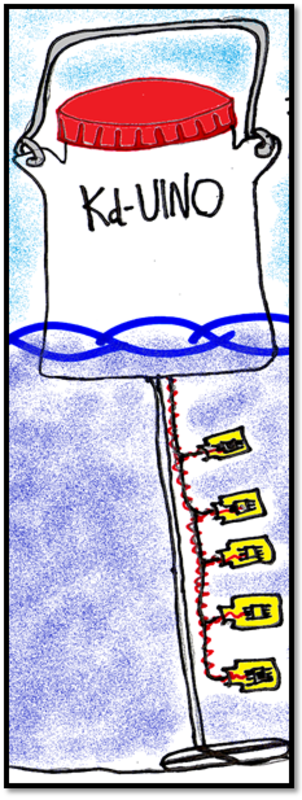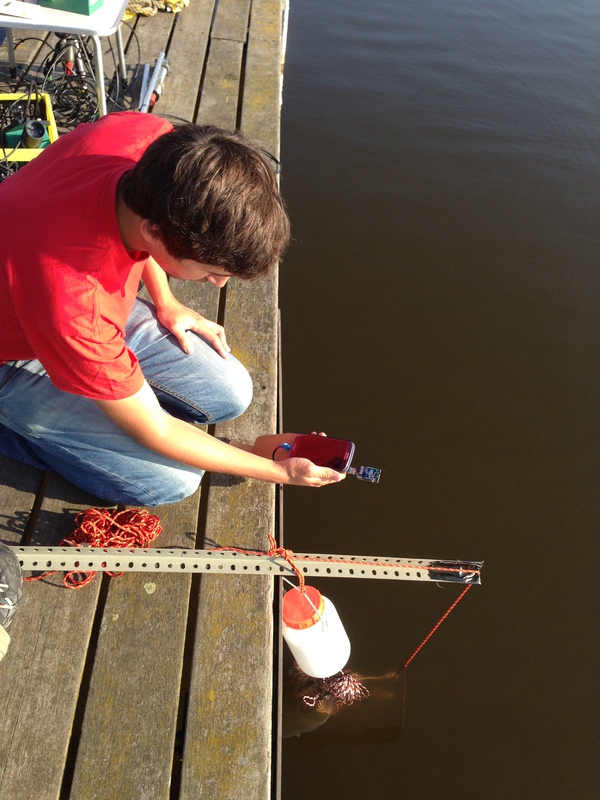Measuring water transparency
There are different ways to measure water transparency. The eldest one is the Secchi disk, dating back to the XIX century, which is a white (and black) disk of 20cm diameter hold by a line that is lowered into the water until it disappears from the sight. The maximum visible depth indicates the transparency level of the water called the Secchi Depth (a demonstration of its use can be found in http://youtu.be/ZWtd5z97gMA).

Figure 1. Secchi depth depends on light penetration
There also exist some oceanographic equipments (radiometers) but as they are very expensive, they are not adequate for a citizen science project.
In the last decades, technology advances in optical sensors have allowed to develop very low cost systems to measure water transparency. KdUINO is an open source low cost mooring system that is being developed for the Citclops project. Citizens will be able to build their own buoy with its sensors and will set it in the sea. It is possible to let the KdUINO in the water during large periods of time. A radiofrequency system allows to collect the data of transparency measured by the sensors of the KdUINO. It thus gives continuous measures of transparency in time and allow a large spatial coverage of the coastal zone, something unthinkable using classical radiometers due to their cost.
 |
 |
Figure 2: the KdUiNO buoy
Another way to measure water transparency is by analysing underwater photographs of a specific target : some volunteer scuba divers are asked to take pictures of a specific pattern that is given. From the mere pictures and using advanced image processing analysis, we are able to evaluate the distances and to deduce some transparency indicator in the three colour bands: red, green and blue.

Figure 3. Using underwater images to estimate water transparency
